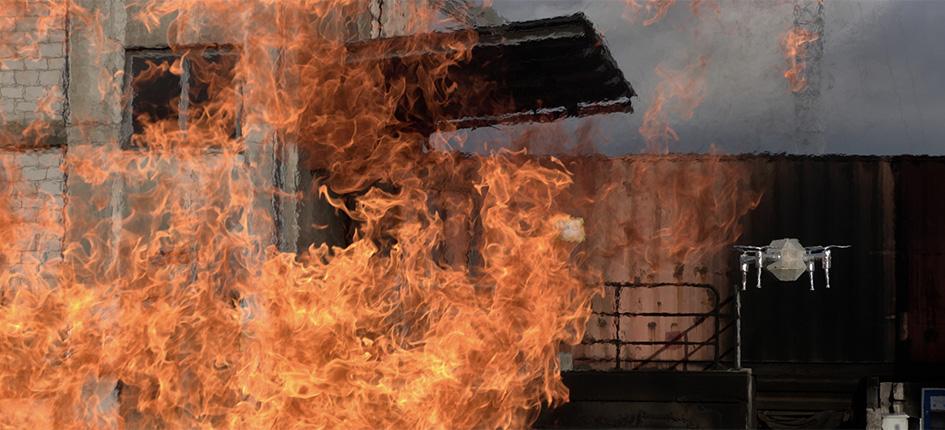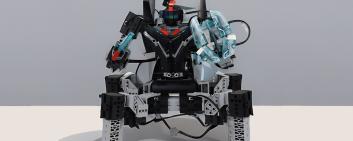The FireDrone developed by Empa and the Aerial Robotics Laboratory of Imperial College London has survived its baptism of fire: According to a press release issued by Empa, initial tests with the flying robot, which is designed to support fire departments in their dangerous work, went well. At the Empa flight arena in Dübendorf in the canton of Zurich, the tests revealed that the flight characteristics and controllability of this specialist drone, which measures in at around 50 centimeters, were “excellent” despite the special features. These include the autonomous aircraft being equipped with a new type of insulation jacket, an additional built-in cooling system and aluminum cladding.
The design, which the researchers have also recently published in the journal “Advanced Intelligent Systems”, was convincing during this dry run. However, in order for the drone to be able to provide the emergency services with initial information about the source of the danger, it must also be able to withstand extreme heat. “To fly closer, the extreme heat generated by a fire is too great for conventional drones”, comments David Häusermann from Empa’s Sustainability Robotics Lab.
The insulating material that made this possible was synthesized by the Building Energy Materials and Components lab at Empa. This is an ultra-light aerogel made of polyimide and silica that has also been reinforced with fiberglass. The electronics, thermal imaging camera and CO2 sensors installed in the FireDrone prototype survived several test flights unscathed in tests with a gas fire on the training grounds of the Andelfingen training center. The focus will now turn to testing the drone under strong soot development.
“If a drone makes the initial reconnaissance of the situation, we don’t have to send firefighters into the danger zone immediately”, explains Stefan Keller, training coordinator for the fire department of the Canton of Zurich’s building insurance in the press release. “For us, this progress is enormously interesting”, he adds.





